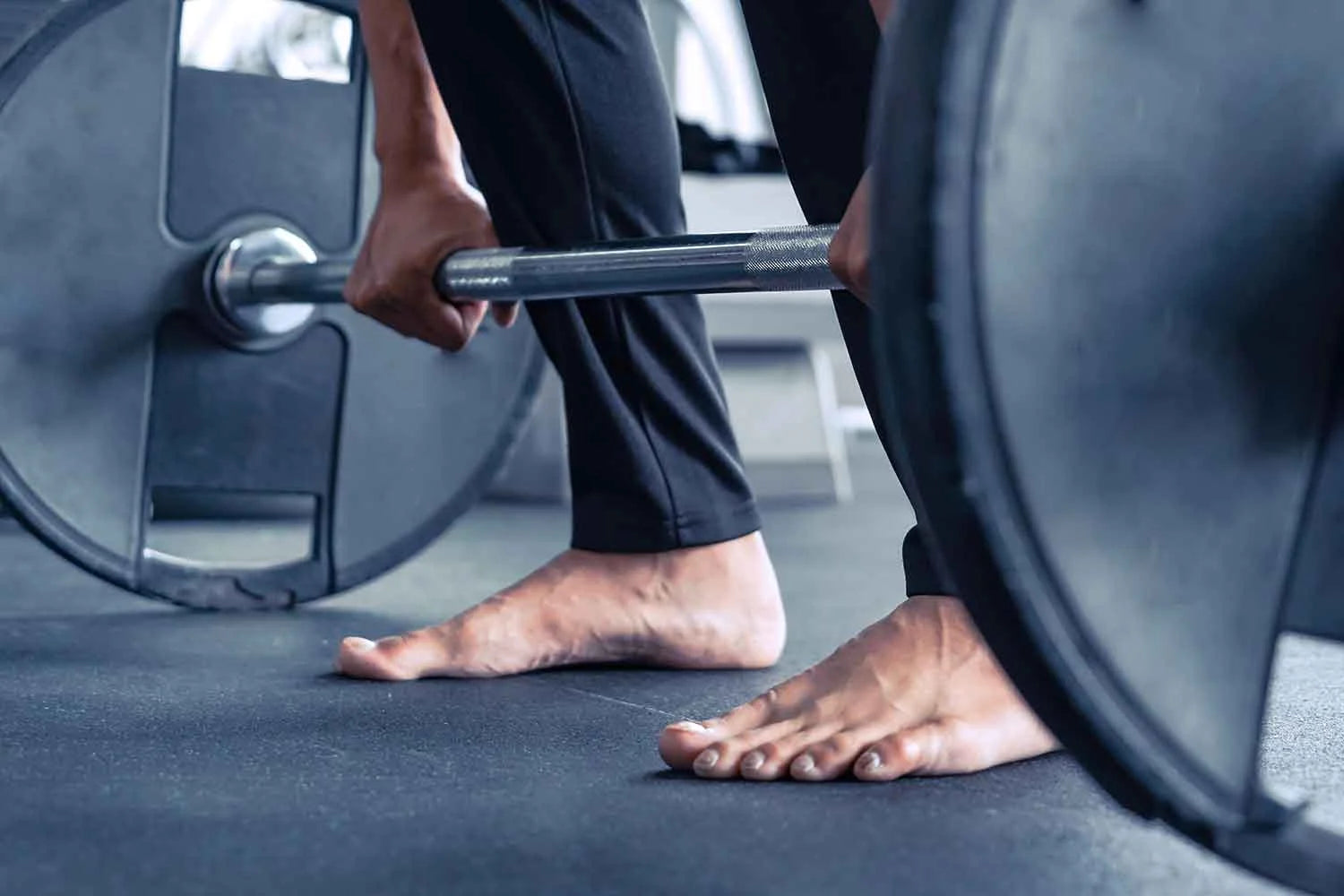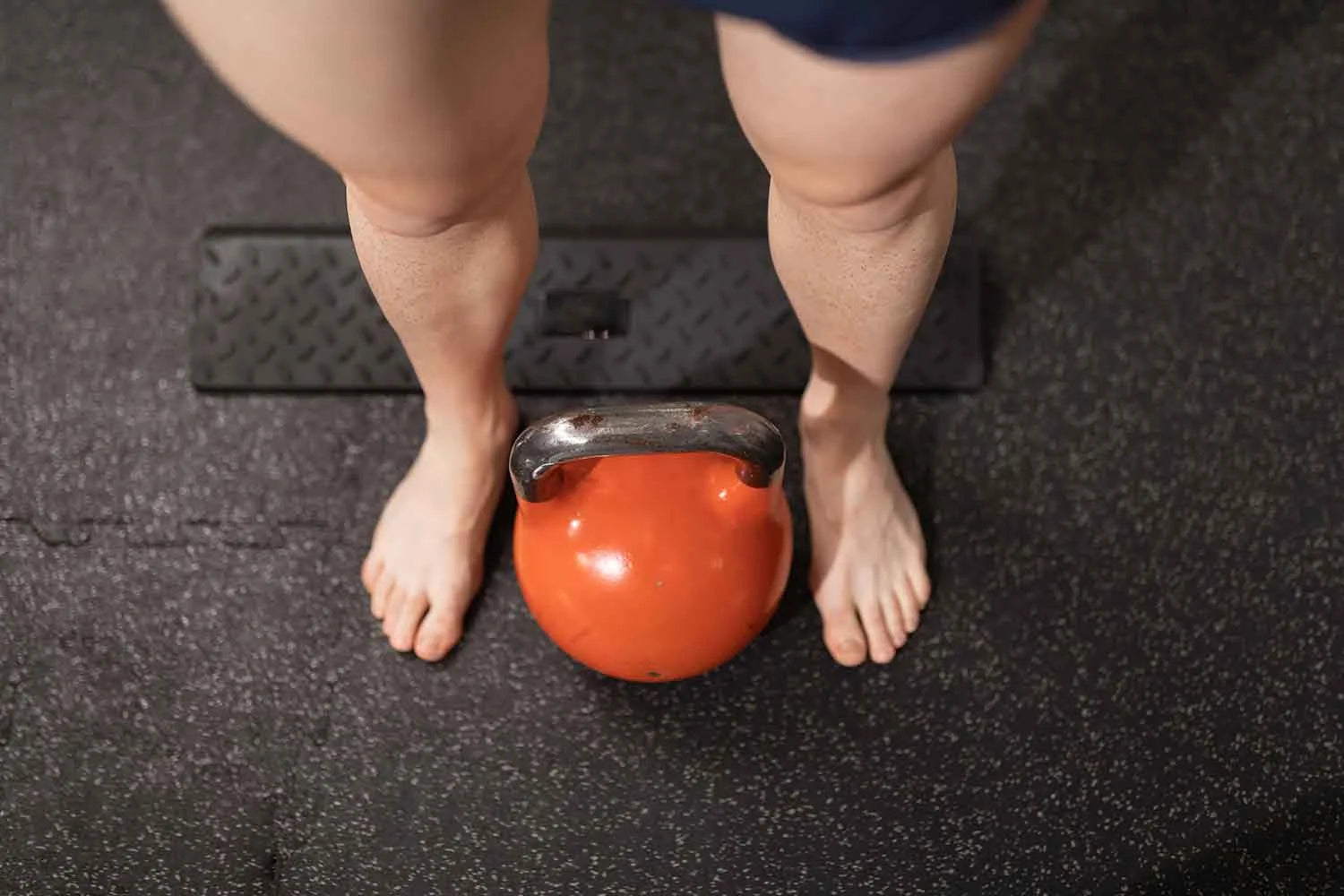Have you ever thought about training barefoot? Beyond being a trend, this practice has solid foundations in performance, stability, and the body–ground connection. Especially if you train at home or in an outdoor gym with artificial turf, taking off your shoes can offer you a different, more natural experience.
More and more people are choosing to train without shoes —whether in functional workouts, strength sessions, or mobility work. In this article, we’ll explain why going barefoot can improve your performance, when it’s safe, and what to keep in mind if you want to get started. If you’re building your home gym or outdoor workout space and considering barefoot training, this is for you.
Why Train Barefoot?
More and more people training in their home gyms are choosing to ditch their shoes. And it’s not just an aesthetic or comfort trend: barefoot training has solid functional and physiological benefits.
While it’s not for everyone or for every exercise, in the right context it can bring real advantages in performance, stability, and injury prevention.
Better Balance and Proprioception
One of the main benefits of barefoot training is the direct impact on balance and proprioception. Without the barrier of shoes, the feet can better sense the ground. This allows the body to automatically adjust posture, activate natural stability reflexes, and respond more precisely to changes in position or load.
On artificial turf, this connection is especially comfortable and safe. The soft yet firm texture stimulates the plantar receptors without the discomfort you’d feel on harder surfaces.
A stronger sense of proprioception directly improves your training: more control in squats, more stable lunges, better alignment in unilateral work, and faster reactions in functional movements.

Activation of Foot Stabilizer Muscles
Feet are full of small muscles that remain largely inactive when we wear traditional shoes. This weakens the body’s foundation and can create imbalances that affect knees, hips, and beyond.
Training barefoot forces the foot to work. Without external support, intrinsic muscles activate to stabilize, strengthening the arch, improving body alignment, and increasing overall stability.
In an outdoor gym setup with high-performance artificial turf, this practice makes even more sense. Turf provides cushioning while allowing feet to move freely, unlike rigid or hard flooring. This means you can literally build strength from the ground up —without sacrificing comfort or safety.
Strengthening your feet progressively not only improves technique in lifting or functional movements but also helps prevent plantar fasciitis, ankle sprains, and overload in the posterior chain.
Is It Safe to Work Out Barefoot on Artificial Turf?
A common question when training barefoot at home or outdoors is whether the floor is suitable. If you’re thinking of training barefoot on artificial turf in your home gym, the answer is yes —as long as the turf is high quality and properly installed.
Sports artificial turf is designed to handle intense workouts, provide traction and cushioning, and offer a consistent surface. That makes it one of the best bases for barefoot training, thanks to both its texture and its ability to absorb moderate impacts.
Why it’s safe and recommended:
-
Balanced cushioning: Unlike hard floors, turf provides gentle shock absorption while maintaining stability.
-
Comfortable texture: Sports turf fibers are durable yet soft, allowing for barefoot training without irritation or friction burns.
-
Non-slip surface: Even with moisture or sweat, turf maintains good grip, reducing the risk of slipping.
-
Easy to clean: Barefoot workouts require clean surfaces. Artificial turf can be quickly washed with water and mild soap.
Of course, always check that the surface is clear of small objects before training, keep it clean, and avoid barefoot workouts if you have injuries or foot sensitivity.

Why Do Many People Lift Weights Barefoot?
It’s becoming more common to see people lifting weights barefoot, especially in functional training, CrossFit, or powerlifting. Far from being a fad, this choice has technical benefits that many athletes and coaches endorse.
Reasons barefoot lifting helps:
-
Better ground connection: Feeling the floor improves stability and control in squats, deadlifts, and lunges.
-
More natural posture: Shoes often have raised heels that alter posture. Barefoot lifting keeps the body aligned.
-
Improved weight distribution: Without soles interfering, weight spreads evenly across heel, midfoot, and toes.
-
Foot strengthening: More foot activation means greater strength, mobility, and endurance over time.
That said, not every surface is suitable —training on hard or unstable floors can backfire. That’s why sports artificial turf is a great choice: it offers traction, cushioning, and safety all in one.
Barefoot or Minimalist Shoes: Which Is Better?
The choice between barefoot training and minimalist shoes depends on your goals, training style, and experience. Both aim to free the foot and encourage a more natural stride.
-
Barefoot training
The most direct way to reconnect with the ground. Perfect for stability, foot strengthening, and technique in strength work. But it’s not for everyone —if you have injuries, very sensitive feet, or only hard flooring, it may not be ideal. -
Minimalist shoes
Offer middle ground: protection from impact, cold, or abrasive surfaces, while keeping soles thin and flexible for ground feel. They’re ideal if you want the benefits of barefoot training with extra protection.
Both work well for home gyms or outdoor setups, especially on high-performance artificial turf —a base that’s stable, safe, and kinder to feet than hard ground.
Quick takeaway:
If you’re new, start with short barefoot sessions to let your feet adapt. If you want a safer transition, begin with minimalist shoes and decide later what fits best.

Conclusion: Step Back to Your Roots
Barefoot training isn’t just a trend —it’s a conscious way to move, reconnect with your body, and strengthen from the ground up. Whether you want to improve technique, gain stability, or simply feel freer when working out, it’s worth trying.
And if you’re lucky enough to train at home, why not create a space that feels as good as barefoot training itself?
At Heroturfs, our high-performance artificial turf is ideal for those who want comfort, functionality, and style in their outdoor or home gym.
👉 Wondering which turf suits your training best? Get in touch, and we’ll help design your ideal space —starting from the ground up.











